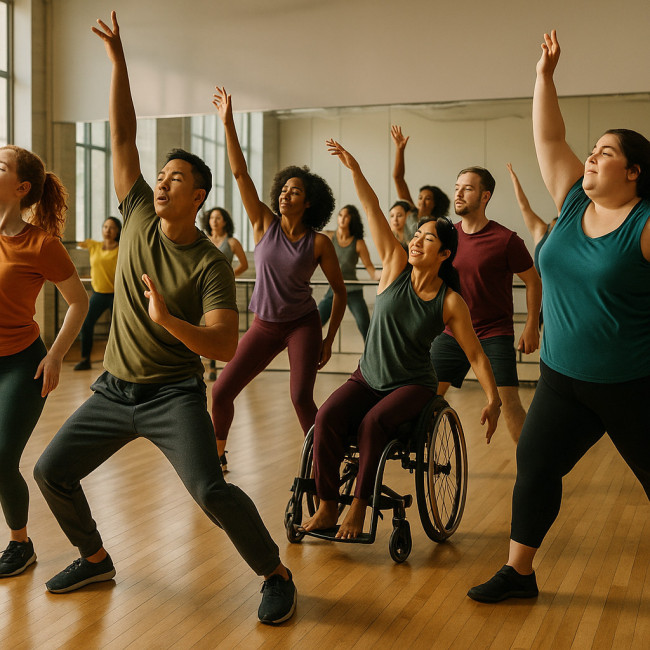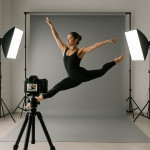Inclusive casting calls: attracting dancers of all abilities with clear briefs
Want to reach the widest pool of dance talent and avoid last-minute recasts? Crafting an inclusive casting call—one that welcomes dancers of every ability, body type and background—starts with a crystal-clear brief. Follow this guide to write announcements that resonate, build trust and bring a richer line-up to your next production.
Why inclusive casting calls matter for both art and business

Productions that feature diverse performers feel authentic, appeal to broader audiences and often unlock new funding streams. Yet many calls still deter great dancers by accident—ambiguous requirements, inaccessible audition spaces or rigid timelines can all send talent elsewhere. By stating expectations and support from the outset, you:
- Reduce no-shows and mismatches during auditions.
- Shorten rehearsal learning curves because dancers arrive prepared.
- Improve your reputation on the online dancer directory most recruiters consult daily.
- Meet industry standards on equality, avoiding legal pitfalls.
Five pillars of an inclusive dance brief
1. Precise role description
Replace vague words like “strong” or “fit” with concrete tasks: “lift a 20 kg prop twice” or “hold a 32-count balance on one leg.” Quantifying demands lets performers assess their own capacity without guesswork.
2. Accessibility logistics
List venue entry details, restroom accessibility, and whether assistance animals are allowed. If you offer sign-language interpreters or tactile floor markings, state it up front. Transparency saves everyone time and avoids onsite surprises.
3. Flexible audition formats
Offer at least one remote submission option—self-tape, live video or VR walk-through—so that distance, travel cost or mobility barriers do not exclude talent. Follow video specs that boost dancer callbacks to keep quality consistent.
4. Support resources
Mention on-site physios, quiet rooms, translation services or sensory-friendly lighting. Even if only some dancers need them, everyone appreciates knowing help is available.
5. Clear timeline and feedback loop
Publish audition dates, callback windows and final decisions in a single paragraph. Note how feedback will be delivered—email, phone or directory messaging—to reduce anxiety and keep lines of communication open.
The anatomy of a model casting brief (template)
| Section | Generic Call | Inclusive Call |
|---|---|---|
| Role | Looking for versatile dancers | Two roles: ① floor-work duet, moderate lifts (max 20 kg) ② seated upper-body solo |
| Date | Sometime mid-June | Audition 12 Jun, callbacks 15 Jun, rehearsals 1–15 Jul, shows 20–25 Jul |
| Location | Studio in Paris | Studio in Paris, step-free entrance, accessible restroom, nearest accessible metro: Line 14 – Saint-Lazare |
| Submission | Send reel | Option A: in-person; Option B: self-tape (max 3 min) via WeTransfer |
| Support | — | Quiet room available; stage assistant for wheelchair users; audio descriptions of choreography provided on request |
Writing tips that spark yes-responses
- Front-load inclusion language: Use “We actively welcome D/deaf, disabled and neurodiverse dancers” in the first sentence.
- Avoid euphemisms: Replace “special needs” with specific accommodations.
- Use plain English: Keep sentences under 25 words to improve readability scores and screen-reader performance.
- Publish on multiple channels: Post on your socials, newsletter and directories. Fresh uploads rise quickly, as outlined in how fresh uploads rise in search results.
- Include pay range: Transparent fees build trust and widen applicant diversity.
Distribution checklist
Before hitting “Publish,” run through this list:
- Relevant hashtags (#InclusiveCasting, #AccessibleDance) for social reach.
- Directory posting category correctly tagged (style, location, ability keywords).
- Alt-text added to all images or flyers.
- Direct link to audition form—avoid multi-step sign-ups.
- Contact method that supports assistive devices (email, SMS or directory chat).
Boost applications with smart follow-up
After the call goes live, monitor engagement metrics. If clicks rise but submissions lag, the brief might still be unclear. Tools like rapid profile scanning data help you see where dancers drop off. Tweak the headline, clarify pay or extend the deadline rather than waiting for applications to trickle.
Common pitfalls and quick fixes
- Vague location: Provide GPS links and transit notes.
- Hidden costs: Mention who pays travel or costume expenses.
- One audition day only: Offer alternative slots or virtual callbacks.
- No pronoun field: Adding it in forms signals respect.
- Silence after audition: Send automated “thank-you” notes with next steps.
Quick quiz: Is your casting call truly inclusive?
FAQ
- Do I need separate briefs for disabled and non-disabled dancers?
- No. A single, well-structured brief that spells out tasks and accommodations works for everyone and prevents unintentional segregation.
- How long should an inclusive casting call be?
- Aim for 300–400 words. That's enough to cover role details, access info and pay without overwhelming readers.
- What if my venue is not fully accessible yet?
- State current limitations honestly and describe any temporary fixes (portable ramps, livestream auditions). Transparency earns goodwill even when facilities lag.
- How quickly should I reply to accommodation requests?
- Within 48 hours. Fast responses signal professionalism and give dancers time to prepare alternative plans.
Key takeaways
Inclusive casting calls are not longer; they're clearer. By quantifying physical requirements, sharing access details and offering flexible submission routes, you expand your talent pool and strengthen your brand. Ready to draft yours? Use the template above, review the quiz, and keep refining until every dancer—regardless of ability—can confidently click “Apply.”
Next steps
Still refining your auditions? Explore captioned video strategies to make sample choreography universally understandable, or study engagement metrics that predict dancer fit before final hiring. Each improvement compounds into a smoother, more successful production.
Call to action: Draft your inclusive brief today and post it on your favourite platforms—then watch a richer mix of applications roll in.











